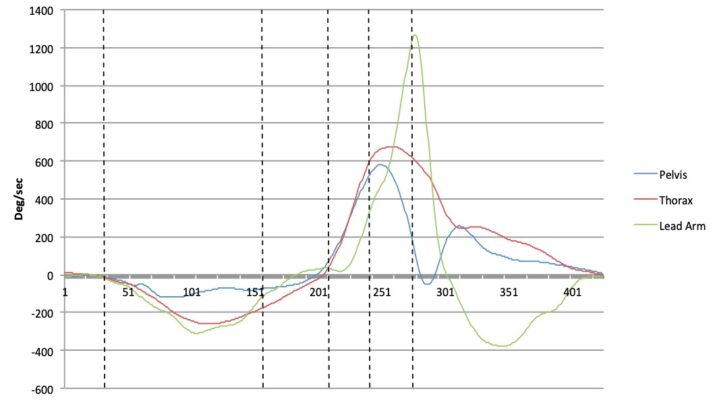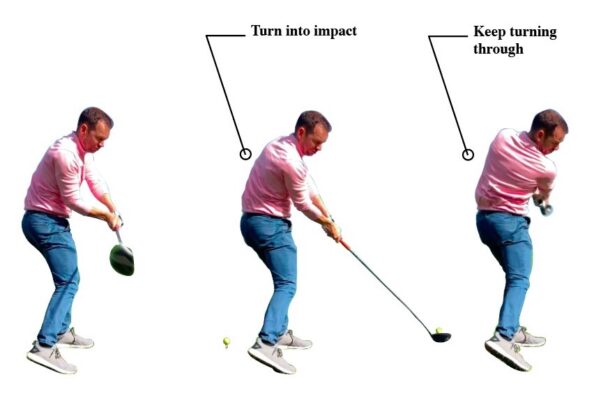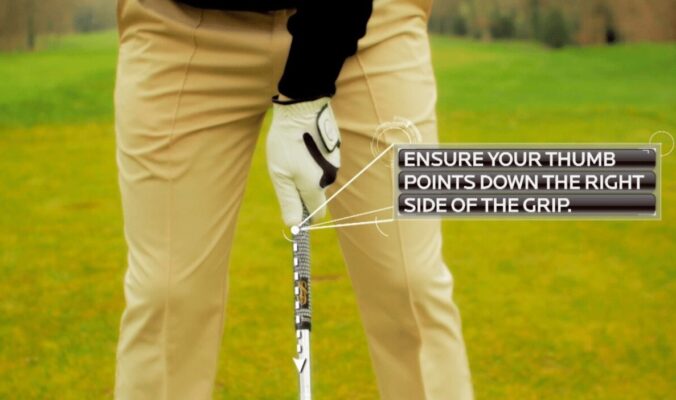Holding a golf club correctly is essential for consistent, accurate shots. Here’s a general guide on how to hold a golf club:
-
Align the clubface: Before you even take your grip, ensure the clubface is aligned to target. You need to be certain the clubface is aiming where you want the ball to go.
-
Positioning the club in your hands: Place the club handle in your left hand (for right-handed golfers), not too much into the palm but more along the base of the fingers. The heel pad on top of the grip and your fingers wrapped around it. This allows you to control the club with your fingers, which is preferable to controlling with your palms.
-
Left hand grip: Look down at your left hand (for right-handed golfers). You should see two knuckles on your hand. The V shape formed by your thumb and forefinger should point toward your right shoulder.
-
Right hand grip: Bring your right hand in from the side and fit it onto your left hand. Your left thumb should fit into the lifeline of your right palm. The V shape formed by your right thumb and forefinger should point toward your right shoulder, similar to your left hand.
-
Grip styles: There are several grip styles that you can use:
-
The interlocking grip is where the index finger of the left hand and the little finger of the right hand interlock or hook each other. This is often recommended for people with less hand and forearm strength, or smaller hands.
-
The overlapping grip, or Vardon grip, involves the little finger of the right hand overlapping the space between the index and middle finger of the left hand.
-
The 10-finger grip, or baseball grip, has no finger interlocking or overlapping, but all ten fingers touch the club. This grip is often used by beginners, players with joint concerns, and those with smaller hands.
-
-
Grip pressure: Your grip pressure should be firm but relaxed. Gripping too hard can restrict your swing and often leads to less control, not more. A common phrase is to hold the club like you would hold a bird: firmly enough that it can’t fly away, but not so tight that you would hurt it.
-
Grip check: The club should feel secure in your hands. An easy way to check your grip is to take your setup, then lift the club off the ground and point it straight out in front of you. If the grip is correct, you should be able to hold the club in this position without strain.
Remember that every golfer may have a slightly different grip due to personal comfort, hand size, and the specific demands of their swing. You should consider getting a professional golf lesson to help ensure your grip (and the rest of your swing) is as good as it can be.
A handicap in golf is a number that represents a golfer’s ability based on their previous performance. The purpose of a handicap is to allow players of different skill levels to compete against each other on a fair basis.
Here’s how it works:
-
Calculation: A golf handicap is calculated using a formula that takes into account the player’s recent scores and the difficulty of the courses they’ve played. The World Handicap System (WHS) introduced in 2020 uses the best 8 of the last 20 scores to calculate a golfer’s handicap. The system adjusts a golfer’s handicap up or down as new rounds are played and older rounds drop out of the calculation.
-
Net Score: When golfers with handicaps play against each other, they compare net scores to determine the winner. The net score is calculated by subtracting the player’s handicap from their gross score (the actual number of strokes taken).
-
Leveling the Field: The effect of this system is to level the playing field. For example, if a player with a handicap of 5 plays a round in 80 strokes, their net score is 75 (80-5). If a player with a handicap of 20 plays the same round in 95 strokes, their net score is also 75 (95-20). Even though the second player took more strokes, their higher handicap evens things out. In this way, golfers of different skill levels can compete against each other fairly.
-
Course and Slope Rating: The handicap system also takes into account the difficulty of the course being played. Each course is given a Course Rating (which estimates the score a scratch golfer, with a handicap of 0, should achieve on the course) and a Slope Rating (which measures the relative difficulty of the course for a bogey golfer compared to a scratch golfer). These ratings help to adjust a player’s handicap to reflect the course’s difficulty.
Remember, your golf handicap should be updated regularly to reflect your current skill level. It’s also worth noting that not all rounds need to be counted towards your handicap—you can choose to play casual rounds that don’t count if you prefer.
According to the official rules of golf, as stipulated by the United States Golf Association (USGA) and the R&A, a golfer is allowed to carry up to 14 clubs in their bag during a competitive round.
This rule applies to golfers at all levels, including professionals. The selection of these 14 clubs is strategically important and is typically tailored to the specific course and conditions a golfer expects to face.
A typical assortment of clubs in a pro golfer’s bag might include:
-
1 Driver: This club is used mostly for tee shots on long holes. It’s designed to hit the ball a long distance with a relatively low trajectory.
-
2-3 Fairway Woods: These are typically used for long shots from the fairway, and sometimes for tee shots on holes where the driver might be too much club.
-
2-3 Hybrids or Long Irons: These clubs can be used in a variety of situations, including long approach shots or shots from the rough.
-
4-5 Mid and Short Irons: These are used for approach shots to the green, typically from distances of 120 to 200 yards depending on the player’s skill level.
-
4 Wedges: This usually includes a pitching wedge, gap wedge, sand wedge, and lob wedge. Wedges are used for short approach shots, usually within 120 yards of the green, and for shots from bunkers or other tricky situations.
-
1 Putter: This club is used on the green to roll the ball into the hole.
Again, the exact composition of the set can vary widely depending on the golfer’s preferences, the course, the weather conditions, and other factors. Some players might choose to carry more or fewer woods, hybrids, or wedges based on their specific game strategy.
A “birdie” in golf refers to a score of one under par on a hole.
To provide some context, “par” is the standard number of strokes an expert golfer is expected to take to complete a hole or a round, given that two putts are used on each green. It includes the tee shot and the approach shot (or shots on a longer hole), plus two putts on the green.
So, for example, on a par-4 hole, if a golfer completes the hole in three strokes, that’s a birdie. On a par-3 hole, a golfer would need to hole out in two strokes to score a birdie, and on a par-5 hole, completing it in four strokes would be a birdie.
Scoring a birdie usually requires a combination of accurate tee shots, precise approach play, and often, strong putting. It is a notable achievement for golfers at all levels. In professional play, stringing together several birdies in a row can quickly move a player up the leaderboard.
The time it takes to play 18 holes of golf can vary widely depending on several factors, including the pace of play, the skill level of the players, the difficulty and length of the course, the number of players in a group, and whether or not you’re walking or using a golf cart.
However, on average, an 18-hole round of golf takes approximately 4 to 4.5 hours to play for a group of four golfers. This is generally considered a moderate pace of play by most golf courses, and many courses use this estimate for scheduling tee times.
At particularly busy courses or during peak times, a round might take 5 hours or more, especially if there’s a lot of “waiting” time spent at each hole. In contrast, a single golfer walking and playing at a brisk pace could potentially complete an 18-hole round in less than 3 hours.
Golf’s governing bodies have been working on initiatives to speed up the pace of play, recognizing that long rounds can detract from the enjoyment of the game. Techniques for speeding up play include playing “ready golf” (hitting when ready, even if you’re not the farthest from the hole), improving player education about pace of play, and course management strategies.
Yes, golf is considered a sport. It is a competitive game that involves physical skill and strategy, similar to many other sports. Golf requires significant skill, including strength and coordination, precision, and strategic thinking. Here are a few reasons why golf is classified as a sport:
-
Physical Exertion: Although golf might not require the same level of physical exertion as football or basketball, it still requires physical skill. Golfers need to have good hand-eye coordination, strength to drive the ball significant distances, and a high level of precision for putting.
-
Competition: Golf is a competitive activity, with players either competing against each other in matches or against the field in tournaments. The objective is to complete the course in the fewest number of strokes, and golfers must use strategy and skill to achieve this goal.
-
Skill Development: As with other sports, players can improve their golf skills with practice and coaching. There are various techniques and strategies to master, and dedicated golfers often spend considerable time practicing and perfecting their swing, chipping, and putting.
-
Rules and Regulations: Golf has a comprehensive set of rules, maintained by international governing bodies such as the United States Golf Association and the Royal and Ancient Golf Club of St Andrews.
-
Global Recognition: Golf is recognized as a sport by major international sports organizations, including the International Olympic Committee (IOC). Golf was reintroduced in the Summer Olympics in Rio 2016 after a 112-year absence.
-
Professional Leagues: Golf has professional leagues and tours around the world, such as the PGA Tour, the European Tour, and the LPGA Tour, where athletes compete at an elite level for significant prize money.
While golf may be a different type of sport than those that require constant intense physical activity or direct team interaction, it is still a sport because of the physical skill, competition, and dedication involved.








